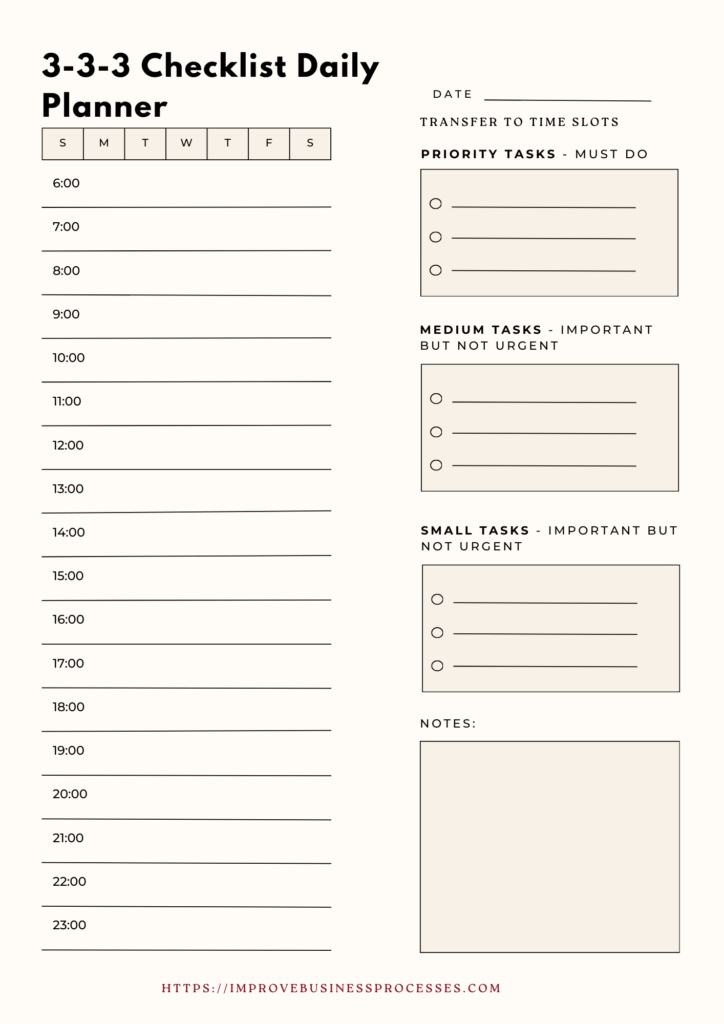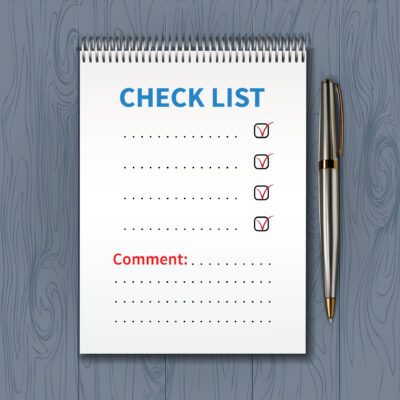Whether you’re managing a team or flying solo, having a daily task checklist is like giving your brain a GPS for the workday. You get:
- Clarity on what matters most
- Momentum from checking things off (oh, that sweet dopamine hit)
- Efficiency, because you stop wasting time guessing what to do next
- A sense of accomplishment, even when fires pop up
Oh, and let’s not forget: it cuts down on the “Wait, did I email that client?” panic at 6 p.m.
Checklists Provide Clarity and Sense of Purpose
Starting on the right foot each morning is about planning and prioritizing. You don’t want to dive into your day without a clear game plan.
Prioritize your tasks by assessing which ones will have the most significant impact and tackling those first.
Don’t get bogged down by the minor details or less important activities. Some of the essentials can include the following:
A tech check is just good housekeeping. Make sure your work tools—computers, software, project management platforms—are running smoothly. Catching potential snags early can save substantial time later when you dive into deeper tasks.
Time blocking is your friend when you want to protect your productivity. Start your day by blocking out chunks of time for specific tasks.
This way, tasks won’t bleed into each other, and you’ll have a better sense of accomplishment as you check off each completed task.
A daily stand-up meeting isn’t just for Agile teams. It’s an opportunity to gather your team together briefly each morning, aligning everyone’s focus and honing in on the day’s objectives.
Think of it as setting the GPS before a road trip, ensuring everyone knows the destination and the route to take.
Emails can be both a blessing and a curse. When you start the day, take a moment to send out any essential emails that provide direction, share updates, or clarify expectations. Keep them concise and to the point, saving everyone’s time and reducing inbox clutter.
Checklist Method #1: The 3-3-3 System
This one can save your sanity, especially during your first year in business. It’s perfect if your days are packed but you still want to make real progress.
Here’s how it works
- 3 Priority Tasks – Big rocks. The must-dos! Think: submitting a proposal, onboarding a client, running payroll.
- 3 Medium Tasks – Important but not urgent. Like reviewing your daily planner printables, updating your time management checklist, or answering non-urgent emails.
- 3 Small Tasks – Quick wins. Stuff like ordering supplies, posting to social media, or checking your daily habit tracker.
Pro tip: Write it down the night before. That way, you’re not wasting your brainpower first thing in the morning trying to remember what day it is, much less what you’re supposed to do.
Keep them in a cheap notebook next to your coffee maker. Old-school? Sure. Effective? Absolutely!
Daily Task Checklist Template – Print to Use

Checklist Method #2: The Block & Batch Daily Task Checklist
This method is a game-changer if your to-do list is more chaotic than your inbox on a Monday morning.
How it works
- Time block chunks of your day (e.g., 9–11 AM: client calls, 1–3 PM: admin)
- Within each block, use a checklist for daily chores—business chores, that is—to batch similar tasks
- Include recurring items like reviewing your workday checklist, logging time in your personal task planner, or updating your routine task manager
It’s basically like meal prepping but for your brain! You group similar tasks together, so you’re not jumping between creative work and billing tasks like a caffeinated squirrel.
I started doing this after I caught myself proofreading a blog post while also trying to do my taxes. Spoiler: I did both badly.
Tips to Make Your Daily Task Checklist Stick
Let’s face it, checklists sound great in theory, but sticking to them? That’s where most folks fall off. Here’s what I learned the hard way:
- Keep it visible. Use a whiteboard, sticky note, or digital task organizer—whatever works for you.
- Be realistic. If your checklist looks like a CVS receipt, you’re setting yourself up to fail.
- Review & adjust. What worked last week might not work this week. Tweak your daily action plan accordingly.
- Celebrate wins. Even crossing off “check email” can feel victorious on a rough day.
Common Mistakes When Using a Daily Task Checklist
Yup, I’ve made all of these—so you don’t have to:
- Making it too detailed (do you really need a bullet point for “open laptop”?)
- Ignoring it by 10 a.m. and winging the rest of the day
- Forgetting to add “unexpected client fire” buffer time
- Treating it like a wish list instead of a plan
Trust me, your work task list should be helpful, not stress-inducing.
Daily Task Checklist Tools That Help
Not all heroes wear capes. Some come in the form of apps and templates. Here are a few that made my life easier:
- Trello or ClickUp for drag-and-drop task managing
- Printable daily routine planner sheets you can scribble on
- A morning routine checklist to kickstart your day
- Good ol’ pen and paper when tech feels too much
Use what fits your vibe. It’s not about being fancy—it’s about being functional.
Reflect and Reset: Close the Day for Ongoing Success
As the workday winds down, it’s time to shift gears and focus on wrapping up. Conduct a thorough end-of-day review by quickly scanning through what was accomplished.
Tidying up loose ends ensures that nothing falls through the cracks and sets a solid foundation for the next day.
Recognizing wins, no matter how small, is vital for morale. Acknowledge the hard work and progress you have made during the day. It strengthens relationships and fosters a positive culture where success is celebrated.
Preparing tomorrow’s schedule with intention can make a huge difference. Spend a few minutes outlining key objectives for the following day. This proactive approach provides clarity and reduces morning stress, allowing for a smoother start.
Documenting insights and lessons from the day ensures continuous learning. Jot down what worked well and areas for improvement, keeping a log you can refer to. This habit contributes to long-term growth and adaptability.
Conclusion: Your Sanity Is Worth the Effort
Look, small business life isn’t for the faint of heart. It’s messy, unpredictable, and sometimes completely bonkers.
But using a daily task checklist—whether you go with the 3-3-3 method, the block-and-batch system, or your own hybrid—can give you just enough structure to stay sane and actually get stuff done.
And that? That’s a win in my book.
Now go and make that checklist. And maybe finish your coffee while you’re at it.
Need Help? Contact BCINC for Assistance Now!Related Articles
- Causes of Low Employee Productivity – How to Fix Multitasking
- 5 Simple Ideas to Increase Productivity and Not Kick it Out
FAQs: Daily Task Checklist for Small Business Owners
What should be included in a business daily task checklist?
Your checklist should include high-priority tasks, admin duties, follow-ups, and recurring responsibilities like emails, meetings, or billing. Add items from your daily goals list or home task checklist if working remotely.
How long should a daily tasks checklist be?
Keep it manageable—7 to 10 items max. You want focus, not a brain dump. Save that for weekly planning!
Is it better to use paper or digital checklists?
Whichever one you will actually use! Paper gives satisfaction, digital offers flexibility.
How do I make my daily task checklist more effective?
Batch tasks, set priorities, and review progress daily. Don’t forget to build in space for the unexpected.

